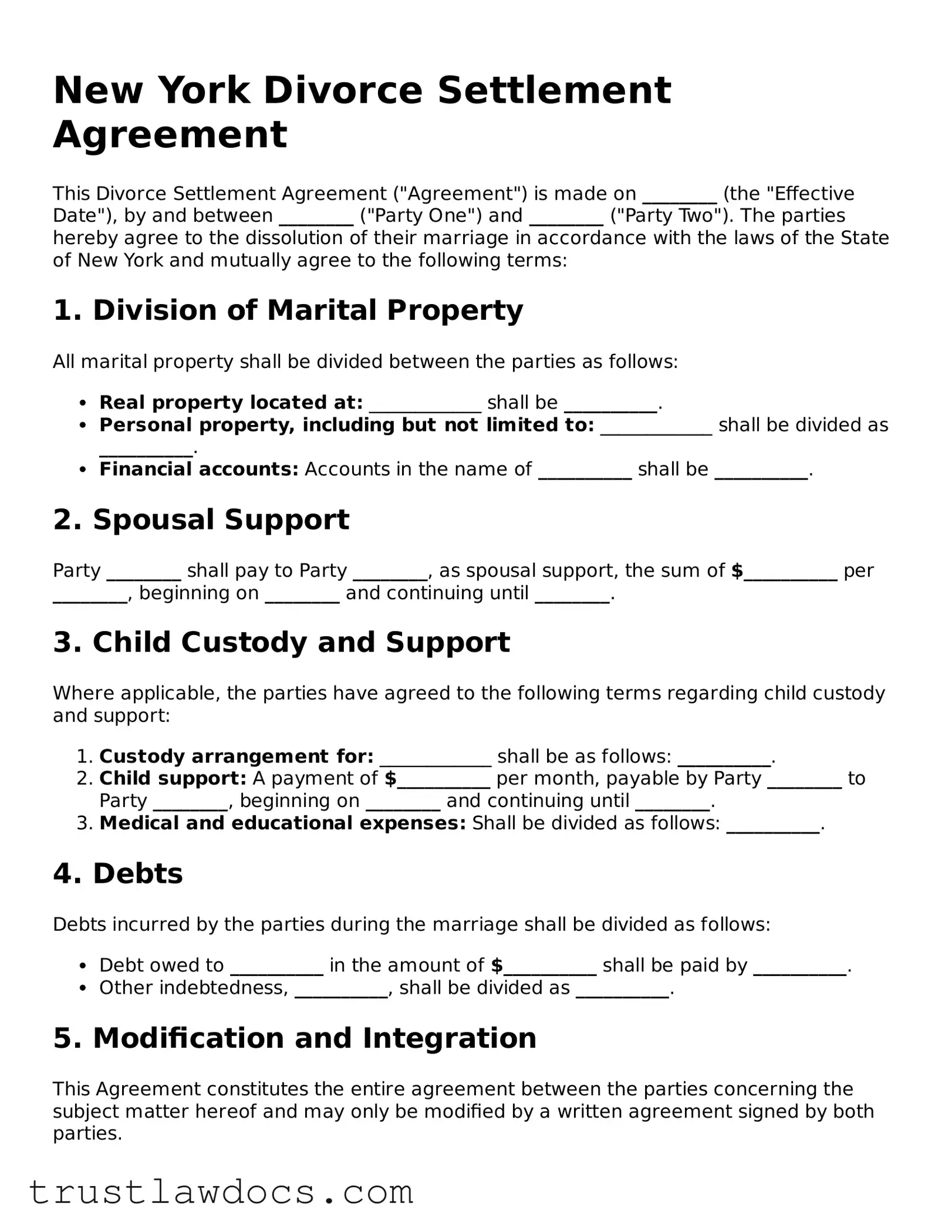What is a New York Divorce Settlement Agreement?
A New York Divorce Settlement Agreement is a legal document that outlines how a divorcing couple in New York has agreed to divide their assets, debts, and other responsibilities. This can include agreements on alimony, child support, and child custody. It's a crucial step in finalizing a divorce and helps both parties clearly understand their post-divorce obligations.
Who needs to sign the Divorce Settlement Agreement?
Both spouses need to sign the Divorce Settlement Agreement. In some cases, witnesses or a notary public may also be required to sign, adding an extra layer of legal validity to the document.
How can I get a Divorce Settlement Agreement in New York?
You can draft a Divorce Settlement Agreement with the help of a lawyer, or you can choose to use a template that is specific to New York. It's crucial to ensure that the document complies with New York laws and fully covers all relevant aspects of your divorce. Legal advice can be invaluable in this process to ensure the agreement is fair and binding.
Is the Divorce Settlement Agreement legally binding?
Yes, once both parties sign the Divorce Settlement Agreement and it is notarized if required, it becomes a legally binding document. Both parties are then required by law to adhere to the terms stated in the agreement.
What happens if one party doesn’t follow the Divorce Settlement Agreement?
If one party doesn’t follow the agreement, the other party can file a motion with the court to enforce the agreement. The court may then take steps to ensure compliance, which can include issuing fines or modifying the original agreement.
Can the Divorce Settlement Agreement be modified after it’s been signed?
Yes, changes can be made to the Divorce Settlement Agreement after it's been signed, but both parties must agree to any modifications. These changes should be made in writing and, similarly to the original agreement, should be signed by both parties to be legally binding.
Does a Divorce Settlement Agreement cover child custody?
Yes, a Divorce Settlement Agreement can include provisions for child custody and visitation schedules. It should outline how the parents will share responsibility for their children and how much time the children will spend with each parent.
How does a Divorce Settlement Agreement impact child support?
The agreement can specify the amount of child support one parent will pay to the other. It should also cover how the parents will handle additional expenses for the children, such as healthcare, education, and extracurricular activities. The agreed-upon amount should comply with New York’s child support guidelines unless both parties agree on a different amount and the court approves it.
Can a Divorce Settlement Agreement decide on alimony?
Yes, the agreement can include terms regarding alimony, also called spousal support. It should outline the amount, frequency, and duration of payments. Factors such as the length of the marriage, the standard of living during the marriage, and each spouse’s financial resources are typically considered.
What should I do if my spouse and I cannot agree on a Divorce Settlement Agreement?
If you and your spouse cannot reach an agreement on your own, you may benefit from mediation, where a neutral third party can help you negotiate the terms. If mediation is unsuccessful, you may need to go to court, where a judge will make decisions regarding your divorce.
